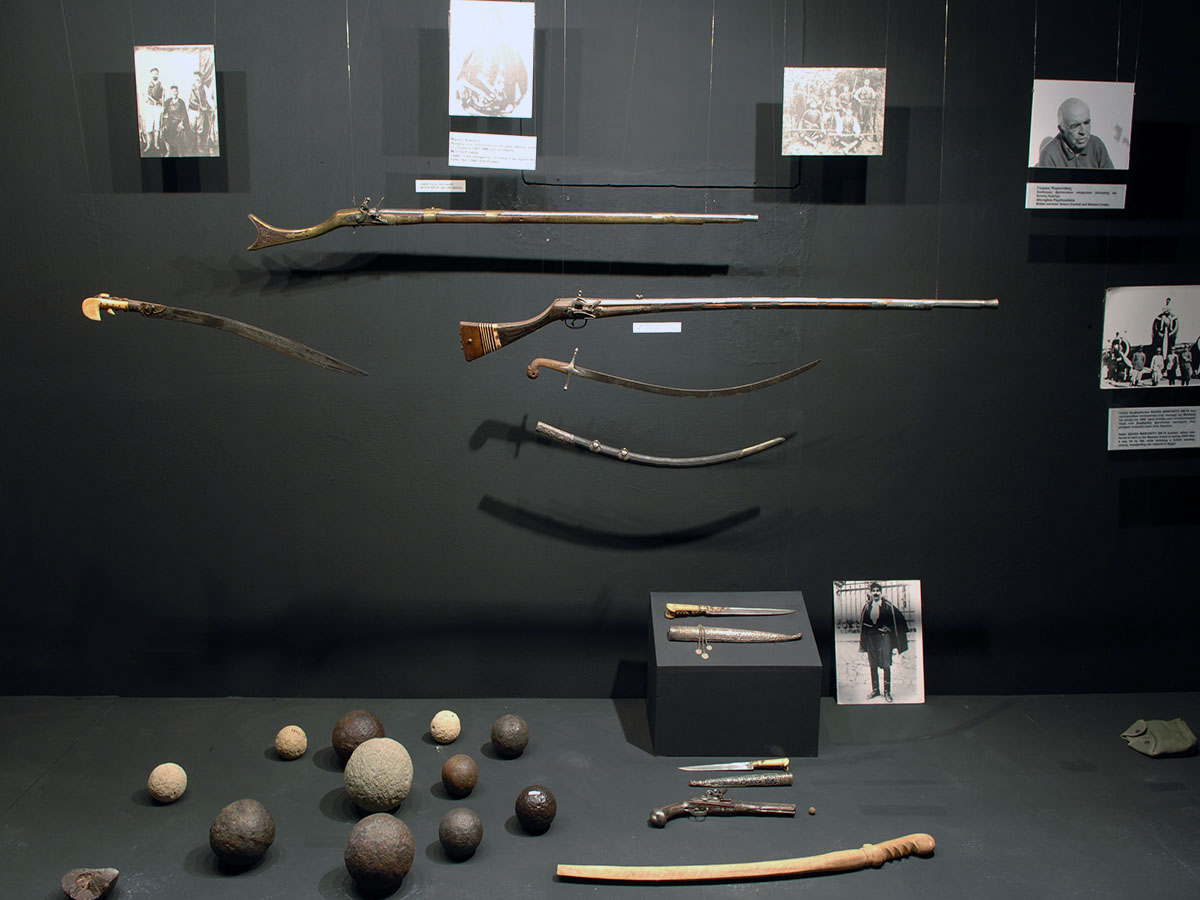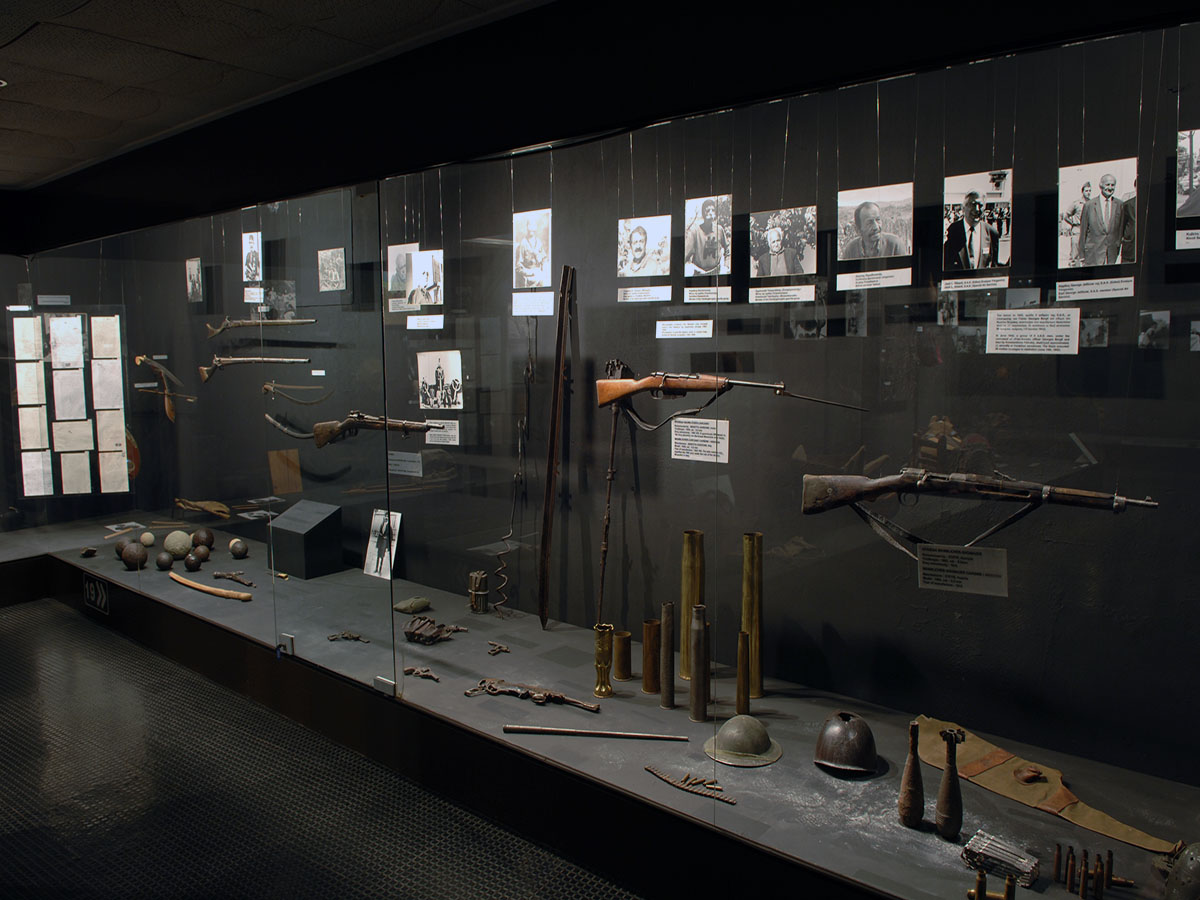Exhibition
Presentation Of Exhibits By Section
War, Weapons And Equipment
Crete is the only part of Europe that has been constantly at war from 1205 to 1945, with only short intervals in all that time.
The exhibition includes a few 18th- and 19th-century weapons used in the rebellions against the Turkish conquerors. On the island’s liberation in 1898 and its reunification with Greece, peace returned to Crete after seven centuries of warfare. For a brief period of 43 years there was leisure to develop a civilised way of life and build schools, hospitals, administrative buildings, law courts, banks etc.
The German invasion in 1941 brought this to an end, but was met with incredible heroism. Immediately after the Cretan defeat by Hitler’s hypermodern war machine, resistance activities began, continuing until 1945 with innumerable engagements, sabotages and, unfortunately, the execution of thousands of civilian hostages.

The WWII exhibits, collected in Crete, come from the German and Italian army of occupation and the Allied forces, British and American, who fought with the Cretans. There are also photographic portraits from the Museum archives, interviews with the last surviving Cretan resistance leaders and men, spies, liaison officers, wireless operators, informants and runners.
There were also Allied saboteurs such as the British Earl Jellicoe and the French Jack Sibard, who, along with three companions, entered Heraklion Airfield in 1942 and blew up 22 German bombers, used to support Rommel’s advance in North Africa with the aim of securing Middle Eastern oil supplies.

